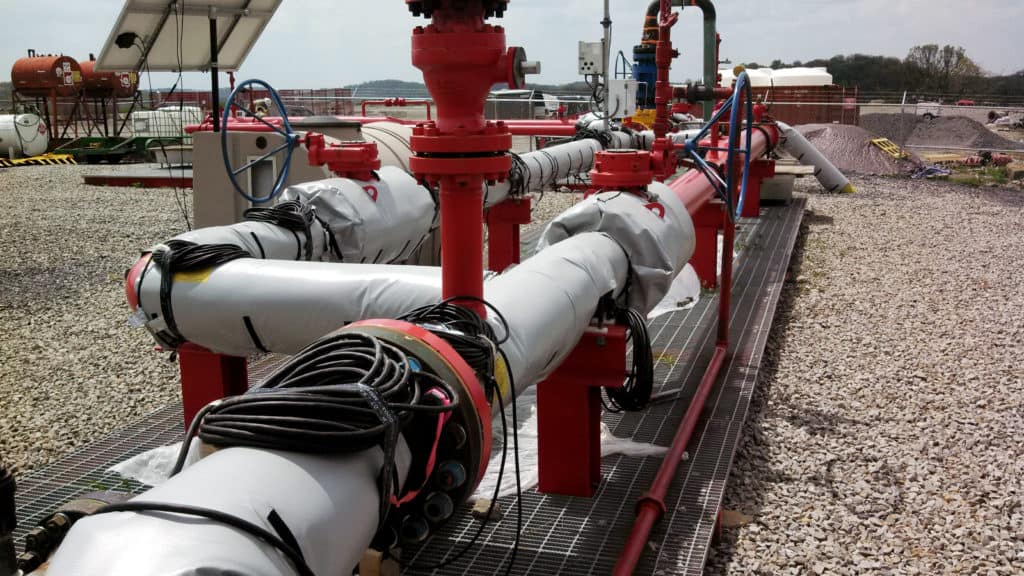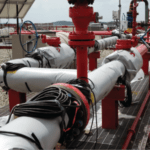Dealing with a frozen pipe involves a lot of headache, time, and money. And unfortunately, it’s not usually something that is in the budget. Nobody thinks “I bet my home’s pipes are going to freeze and burst next month. Better save up!” But the hard truth is that they can easily freeze if left to their own devices in harsh winter temperatures.
The possibility of water pipes freezing is particularly real when they are outdoors. And that makes sense, because they often have absolutely no protection. However, indoor pipes can also fall victim to frigid temperatures, particularly if they are poorly insulated (or currently have no insulation whatsoever!)
Many unsuspecting homeowners have gone on a Christmas vacation, leaving their worries behind them for the beauties of island life, and have returned to find that a frozen pipe has burst. Nobody wants to come home to soggy floors and ruined, precious belongings. That’s one way to be thrown right back into reality, isn’t it?
It’s a much smarter idea to take preventative measures, keeping your home safe and dry.
The good news is that homeowners can easily prepare for the cold winter months before disaster has a chance to strike. Here is a list of basic ways to protect your pipes, and your home, during the cold winter months.
- Maintain a Constant Temperature In All Areas of the Home
- Avoid Turning Down the Heat While On Vacation
- Allow Sink Faucet to Drip Regularly
- Open Cabinet Doors in Kitchen and Bathrooms
- Check At-Risk Piping Regularly
- Insulate Your Water Pipes
- Add Our Reliable Heating Blanket to At-Risk Pipes
Let’s take a closer look at each of these tips.
1- Maintain a Constant Temperature In All Areas of the Home
Some homeowners believe it is a good idea to shut to doors to the rooms that they do not regularly use in the winter. They then opt to close the vents in those rooms. This makes sense at first glance because it allows the heat to flow to the rooms that are used most often.
However, doing this can be a big mistake. Allowing certain areas of the home to get too cold can cause pipes to experience temperatures that are simply too cold. Cold pipes are now at a heightened risk for developing ice clogs, which will greatly reduce the water flow in your home and can lead to the dangers of a burst pipe.
2- Avoid Turning Down The Heat While On Vacation
It is tempting to reduce the temperature in a home when going on vacation. This is because the homeowner would rather save precious dollars on the heating bill rather than heating an empty couch. Unfortunately, doing so (especially on a long vacation) may result in finding a water-logged couch instead.
While it is fine to reduce the thermostat just a few degrees, make sure that the overall temperature is still warm enough to keep those water pipes protected. A good rule of thumb is to avoid turning the temperature below 55 degrees Fahrenheit.
3- Allow Your Sink’s Faucet to Drip Regularly
Moving water has a much harder time freezing than water that just sits in your pipes, particularly if there is no movement for a long time. It’s easy to understand why this is true when you consider how a lake freezes more easily than a river.
Another way you can avoid a frozen area forming in your home’s pipes is to turn on the kitchen and bathroom faucets and allow them to drip. It can be a very small drip, but the movement will help keep the pipes from freezing. This doesn’t have to be all day. You could choose to set a timer on your phone to remind you to turn on the faucet, then have another reminder a few hours later to turn it back off.
You may be thinking “Yeah, but what about my water bill?” Honestly, such a small amount of water should not affect your water bill too much. But it will save you hundreds of dollars (maybe even thousands) by avoiding frozen pipes. Prevention is key here, my friends.
4- Open Your Cabinet Doors Often
This may seem like an interesting one, but the wisdom in it lies along the lines of keeping doors open in your home as well. When cabinet doors are closet (and they are most of the time), it lowers the temperatures inside the cabinet. This creates an unforgiving cold air that greatly lowers the temperature of your water pipes as well.
Of course, if I had my cabinet doors open all day long, it would drive me absolutely nuts. You may be able to relate. Consider simply opening them for the same amount of time as you allow your faucet to drip. This keeps the annoyances to a simple few hours a day while greatly protecting your home from potential water damage and downright disaster.
5- Check At-Risk Water Pipes Regularly
Unfortunately, some of the most at-risk piping in your home is in the areas where you go the least. These areas include the basement, attic, and garage. But now that you know this, you can easily do a quick check every few days to make sure things are looking good and that no damage has occurred. Feel the pipes to ensure they haven’t reached incredibly low temperatures.
Also pay attention to the overall temperature in those parts of the home. If your heating system isn’t sufficient in those areas, you may want to consider an extra heat source to heat the room, such as a space heater.
6- Insulate Your Water Pipes
Check the insulation surrounding your piping. Or have a professional do so for you. Older homes are particularly at-risk for insufficient, old insulation. Or even worse, no insulation at all! Brrrrrr! If you find that you’re in this situation, head to your nearest hardware store or The Home Depot and grab some insulation to get those pipes protected and serving your home the way they should.
Luckily, newer homes are likely to have better insulation conditions. However, this doesn’t mean you’re off the hook. Take a good look at the insulation measures that have been taken in your home previously and update if needed.
7- Add Our Reliable Heating Blanket to At-Risk Pipes
Last but not least, consider adding a heat source to the pipes in your home (or the ones outside of it) that you believe to be at risk of freezing. We recommend checking out our safe, efficient heating blankets that are designed specifically for pipes. These blankets are created to regulate the temperature needs of your home’s pipes with exactness.
This option ensures that your home’s pipes will never freeze – and there’s simply nothing that compares with that peace of mind.
If you know you’re in a situation where specific pipes in your home are in danger, our Powerblanket pipe warming blankets reliably keep your home from experiencing pipe bursts. The preventative measure of a heating blanket will save you from the need to repair and replace items in the future.
Here at Powerblanket, we are known for supplying several companies with the safe construction heating solutions they need to protect their buildings. But we also serve homeowners looking to protect the homes they love.
At Powerblanket, we know that our pipe warming blankets are also one of the safest ways to protect your home’s pipes.
Give Powerblanket’s experienced team a call today at 866.945.4203 with any questions you may have. We’re always here to help!
Frequently Asked Questions
What is the best way to insulate pipes from freezing?
The best way to insulate pipes from freezing is to use foam sleeves, fiberglass, or rubber insulation, and consider adding a heating blanket for extra protection, especially for at-risk pipes.
At what temperature do pipes freeze in a house?
Pipes in a house are at risk of freezing when temperatures drop to about 20° F for a few hours, so it's crucial to insulate exposed pipes to keep them above freezing.
What is the best insulation for cold water pipes?
Foam and rubber insulation are generally the best choices for cold water pipes, as they effectively prevent freezing while also being suitable for hot pipes.
Pipe heaters from Powerblanket keep your fluids flowing all year long, providing freeze protection for your entire system.





